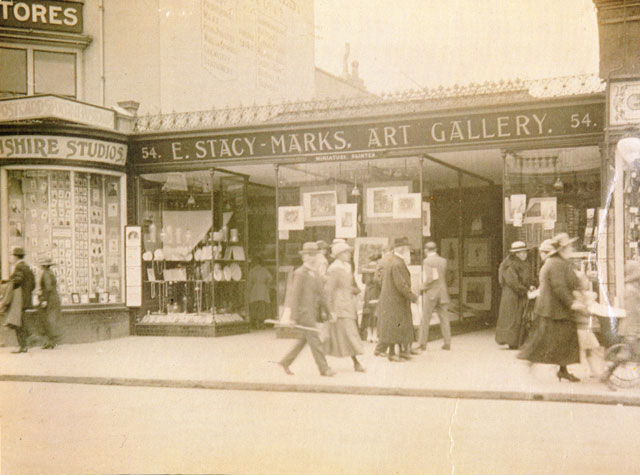Edward Seago
Edward Seago was born in Norwich on March 31st 1910. He was always interested in art as a career and started painting as a child. His childhood was interspersed with spells of illness due to heart weakness which necessitated a mainly private education. In 1924 the family moved to Brooke and he received some instruction in landscape painting from Bertram Priestman, R.A. He held his first one-man show in London at the age of 19 and continued to exhibit there regularly as well as in other cities including New York, Bristol, Glasgow, Toronto, Montreal, Oslo, Bergen, Los Angeles and Brussels.
Between 1930 and 1932 he joined a travelling circus and painted scenes and characters from the circus life, a year later publishing his first book `Circus Company'. During the war he served with the Royal Engineers and designed the insignia and Colours for the Airborne forces. He also accompanied Field Marshall Alexander during the Italian campaign.
Besides being a most gifted artist, Edward Seago was a very talented writer and published a number of books amongst which are `Caravan', `High Endeavour', `With the Allies Armies in Italy', `A Canvas to Cover', `Tideline' and `With Capricorn to Paris'. He was a member of the Royal Society of British Artists, a Fellow of the Royal Society of Watercolourists and a Fellow of the International Institute of Arts and Letters. He died in the early part of 1974.
Extracts from the writing of Edward Seago
`To my mind there are few places to equal the bleak stretches of the East Anglian coast. Perhaps one has to be born and bred there for it to really get in one's blood. But, it has a powerful hold on me, and wherever I go, I feel a longing to return there"
‘Well fortified, I set off with my paints. The others followed so that they would know where I was, and then they were going to walk along the edge of the marsh to the church. Finally I set down my traps, opened up my three-cornered stool, and unpacked my paints. The wind blew straight off the sea, and I couldn't even keep my box still when I lodged it on my knee. Lilias appeared "But you can't sit there, my dear!" she screamed. "You'll get pneumonia in an hour!"
"This is what I'm going to paint," I said "so this is where I'm going to sit." The others arrived; my mother full of ideas for preventing the prophesied pneumonia. "Tie your scarf round your head, dear, and you must have a rug round your knees!" My red neckerchief was duly tied, pudding basin fashion, around my head, and eventually I was left, looking rather like the chrysalis of some weird moth, to start my work. We arranged to meet at the car, and when I arrived the others were already huddled inside. The feeling had gone from my fingers, and I couldn't untie the knot of the neckerchief round my head. We took our last look at the estuary, but somehow I felt no sadness in parting. I shall not see it yet awhile, but some day I shall paint it again, and I know that I'll find something fresh which I've never seen before.'
